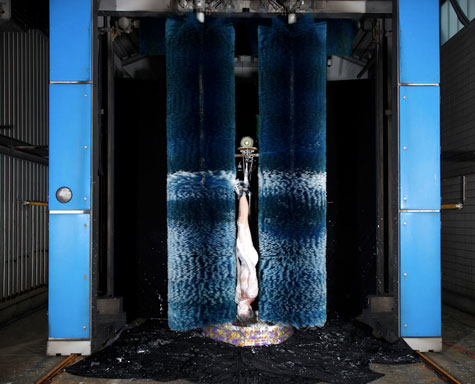 Get Off My Lawn
Get Off My Lawn is a 48-page photo-zine, edited and published by photographer Geoffrey Ellis. The zine features the work of eleven photographers who are 34 years and older*. Get Off My Lawn is a tongue-in-cheek response to the calls for entry, contests and publications that require "emerging photographers" to be somewhere between the ages of 18 and 34.
There are 222 hand numbered copies and each of the 11 photographers has their own cover.
'Waiting' © Jennifer Loeber
*
Yousuf Karsh would say, you may have a camera and eyes, but until a certain age, you don't really see.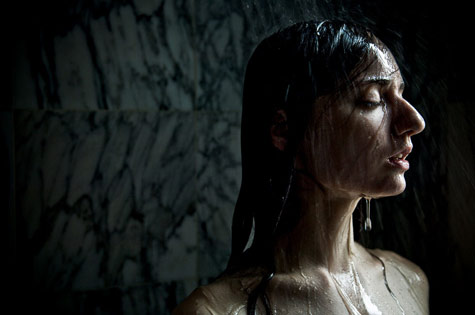 Manjari Sharma
Manjari Sharma's
Shower Series was probably the most talked about by the reviewers at the end of ASMP's fine art portfolio review in May. Her bathroom confessionals really stood out and Manjari spoke about the personal project with true passion, being amazed herself at how her subjects had let go once the water hit them.
"Secretly I have been told by my subjects that it is thrilling and adventuresome to be in my shower; Secretly cheating my traditional and tame Indian upbringing I live through all of my subjects; Fighting their wars and braving their fears for those few hours where we are connected through this pious space."
Fast forward just a few short weeks and not only has she received a lot of press, she won a commission to shoot an ad campaign for Grohe.
"Custom showers were built in a studio and a series inspired by my personal project was recreated in New Delhi. Ten Indian models were selected for the shoot and the result is currently being used on billboards in several cities in India
."
So there you have it: follow your passion, shoot what you love, devote time to personal projects and then present them eloquently, to as many people as possible.
See behind the scenes on
Manjari's blog.
From the original 'Shower Series' © Manjari Sharma
From
The Guardian: Two journalists in London have received a payout from the Metropolitan Police after the Met admitted failing to respect the freedom of the press during a protest at the Greek embassy in London in 2008. In this disturbing
video one cop taunts the photographer like a school kid as he's yanking the guy's camera off his neck, and later they mutter "scum" under their breath.
In letters sent to the journalists, the force said "The [Met] confirms its recognition that freedom of the press is a cornerstone of democracy and that journalists have a right to report freely. [We] recognise that on 8 December 2008 they failed to respect press freedom in respect of Mr Vallée and Mr Parkinson." Both men received £3500 in compensation.
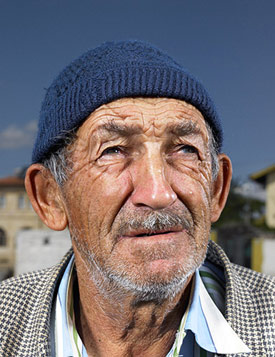
In Dirk's blog,
The Heavy Light, he gives us the opportunity to learn a lot of interesting things about who he shoots, how he shoots and indeed why he shoots!
He sent me a printed magazine of 'The Sultans' a little while ago, and has just written up the back story on how some images taken in India led to his project on older Turkish men. Make some tea and check out parts
1 and
2.
From 'The Sultans' © Dirk Anschütz
"Few things in this world make sense to me. Photography, and the lyrics of a man who sounds like a muppet crooning, happen to be two exceptions. I am attracted to people who find a way to manifest their obsessive qualities into something physical. 'Carnivores and Destructors'* documents people infatuated with the pop singer Morrissey and the various dimensions of this fixation.
Enjoying a band is an abstract idea - the individuals I chose to photograph translate this into something beyond just music and integrate these concepts into a tangible experience and way of life. Somewhere in this self imposed isolation, comfort and safety are found, and that is what fascinates me." - Adam Krause
It isn't every day that a submission speaks to me in the way
Adam Krause's did. We share a huge love of Morrissey, and with these great photographs this was an obvious feature for aCurator.
John Cyr, photographer of the '
Developer Tray' series, invited me to the
SVA gallery in New York's gorgeous Starrett-Lehigh building in Chelsea to view the Photo, Video and Related Media graduates' theses. Cyr's prints look as stunning on paper as in my magazine!
Among a lot of interesting work (surprisingly, plenty shot on chrome and neg as well as digital) I was particularly drawn to
Janosch Parker's 'Primordial Ooze Ensemble'. I saw large oil painted canvases that I understand he had made in China. "...the result of a series of performances in which Parker, also known as Jan Ebeling, submits to a number of vulnerability tests. Employing ingeniously designed mechanical devices and organic substances ('primordial ooze'), Parker seeks to express with self-deprecating wit our precarious human condition. Based on photographs of performances, these oil paintings evoke the grand tradition of European history painting."
Wash © Janosch Parker
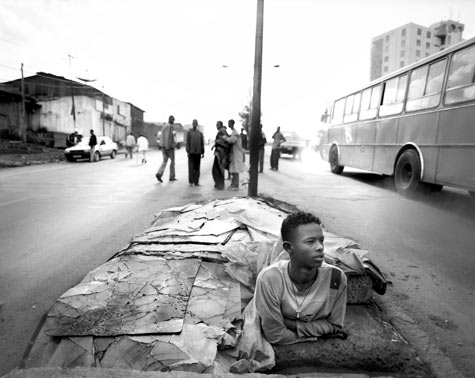
"I was working on a travel story in Ethiopia when I heard about the estimated 80,000 children living on the streets of Addis Ababa. I extended my stay by a few days and start researching and photographing the story. Through a local NGO I was able to make contact with Bruke, a 15 year old boy, who like thousands of other street children had sought refuge underground, making his home in a small drainage hole in the middle of the road. The Merkato commercial center of Addis Ababa has become the de facto place for Ethiopian children escaping rural poverty, AIDS, abusive families, the clutches of indentured servitude and human trafficking. Thinking they have found a haven, they instead find the Merkato a harsh and dangerous environment. These children face the obvious daily struggles of finding food, protection and safety, and are forced to deal with the lingering and constant threat of sexual predators who prey on the vulnerable street children. With no social welfare system and the lack of enforceable child rights in Ethiopia, the children find themselves, in essence, in a state of civil death - the legal status of a person who is alive but who has been deprived of the rights and privileges of a citizen or a member of society.
I spent two days with Bruke, learning about what brought him to the streets and how he survives. For a short while I was able to get sporadic reports on his well-being from my fixer who passed through the area. For the last 2 1/2 years I have not had any news. I am planning to return to Ethiopia later in the year to expand on the work I started there, and with the hopes of finding Bruke again." -
Jason FlorioView the magazine feature.
Learn more.
© Jason Florio
Photographer
Dirk Anschütz asked me to write something for his blog,
The Heavy Light, about how I put together aCurator magazine. So, I reluctantly talked about myself again...
A man after my own heart, he entitled it 'How aCurator's Curator Curates'.
From Giddy Up © Dirk Anschütz 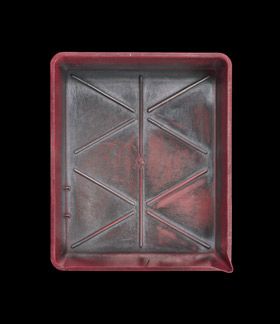 John Cyr
John Cyr is a
photographer and a master printer - he owns and runs
Silver 68, a traditional black and white lab in Brooklyn. He is a faculty member at ICP and is in his final semester pursuing an MFA from the Photography, Video and Related Media Department from the School of Visual Arts.
John is contacting photographers, their studios, estates, assistants, to determine whether any developer trays remain in their collections. Unfortunately, a lot have been discarded over the years, but as you can see in his ongoing project John has successfully photographed several. Enjoy letting your imagination run wild as to which of your favorites might have been printed in these.
"From the mid nineteenth century until today, silver gelatin printing has been one of the most utilized photographic processes. From classic reportage to fine art photography, the majority of it was performed in a black and white darkroom until the mid-1970's. As recently as 2000, black and white darkroom classes still served as the location for introduction to photography courses.
The digital advances in photography over the past ten years have been remarkable. Digital manipulation is found in most contemporary work, even within these developer tray photographs. This shift from film-based to digital imaging is occurring at a rapid rate, which is why photographing developer trays is a timely endeavor. Many photographers, printmakers, and photographers' archivists have already discarded or thrown out their developer trays because they believed they were no longer significant or useful. Irving Penn's developer trays have been thrown away, as have those of master printer Richard Benson. I am photographing available developer trays so that the photography community will remember specific, tangible printing tools that have been a seminal part of the photographic experience for the past hundred years. By titling each tray with its owner's name, I reference the historical significance of these objects in a minimal manner that evokes thought and introspection about what images have passed through each individual tray." - John Cyr
View the magazine feature.
Barbara Mensch's Developer Tray © John Cyr






